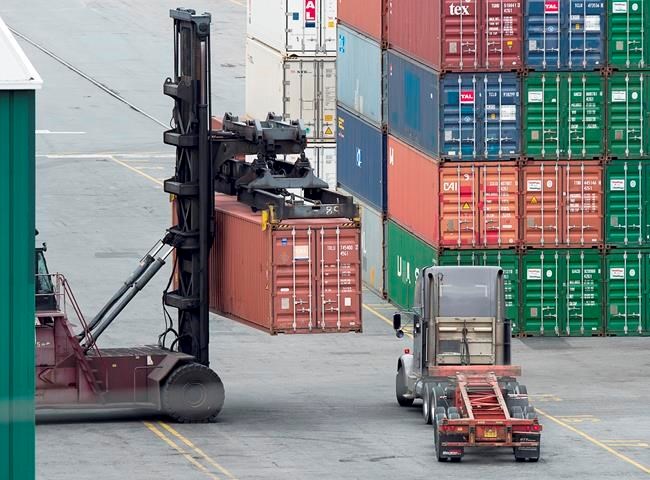Canada's trade deficit rebounded sharply in June as the movement of motor vehicles and parts revved up with a resumption of production after months of COVID-19 lockdowns.
Statistics Canada reported Wednesday that the country's merchandise trade deficit widened to $3.2 billion from a deficit of $1.3 billion in May and $858 million a year ago.
The import of goods rose 21.8 per cent in the month to $42.9 billion but were down 15 per cent from June 2019.
Exports were up 17.1 per cent to $39.7 billion but down 20 per cent from $49.6 billion a year earlier. After a 5.6 per cent gain in May, export levels remained well below the pre-pandemic level of $48.4 billion.
Trade activity has resumed as COVID-19 related restrictions have eased.
"Last week's GDP report may have painted a dour picture of Q2, but we can add today's trade data to the list of indicators pointing to a good-sized rebound for Q3," said Brian DePratto, senior economist at TD Economics.
He said it was encouraging to see further improvement in U.S. manufacturing sentiment last month and robust U.S. housing activity of late that augurs well for Canadian exporters.
However, the durability of the recovery remains an open question.
"Ultimately, as wild and challenging as both the Q2 downswing and Q3 upswing are likely to be, the bigger question is what comes after the whipsaw. Unless and until a vaccine or effective treatment is widely available, expect a more gradual recovery path to emerge, leaving lingering challenges for all areas of the economy — international trade included."
After falling to a low of $1.7 billion in May, the imports of motor vehicles and parts climbed to $5.2 billion in June and represented almost half the growth of total imports in the months.
Imports of passenger cars, light trucks and parts surged to $5.2 billion from $1.66 billion in May, driven by imports from the United States, Germany, Mexico and South Korea. June was the first full month of production as North American auto assembly plants since February, but productions capacity remained below pre-pandemic levels.
Auto exports rose 218 per cent to $6.1 billion.
Imports of aircraft and other transportation equipment and parts nearly doubled to $2.1 billion in June while imports of parts for other transportation equipment reached a record high of $738 million, led by higher imports of parts for other transportation equipment from Belgium. Exports were flat.
Compared with the month before the COVID-19 pandemic's economic impact was felt, imports were down 14.3 per cent from February while exports decreased 17.9 per cent.
In volume terms, imports rose 28.3 per cent while exports increased 10.6 per cent. Import prices were down 5.1 per cent while export prices were up 5.9 per cent.
Canada's trade surplus with the United States narrowed to $1.1 billion from $1.9 billion in May as imports from the U.S. increased 28 per cent to $26.4 billion while exports from the United States gained 21.8 per cent to $27.5 billion.
The trade deficit with China was $1.6 billion as imports reached $3.97 billion while exports were $2.37 billion.
Canada's trade deficit with countries other than the United States widened to $4.3 billion in June from $3.3 billion in May as exports fell 24.7 per cent to $105.7 billion, the lowest level since the fourth quarter of 2010. Exports of energy products plunged 56 per cent, motor vehicles and parts down 56 per cent.
On a quarterly basis, Canada's trade deficit widened to $9.4 billion in the second quarter from $8.4 billion three months earlier.
Exports decreased 24.7 per cent to $105.7 billion. the lowest amount since the fourth quarter of 2010 as exports of energy products and vehicles and parts decreased 56 per cent. Imports fell 22.7 per cent to $115.1 billion, the lowest level since the third quarter of 2011, with motor vehicles and parts down nearly 67 per cent.
Meanwhile, service exports rose 4.1 per cent to $8.1 billion while imports increased 17 per cent to $8.8 billion.
This report by The Canadian Press was first published Aug. 5, 2020.
Ross Marowits, The Canadian Press



